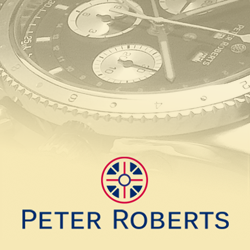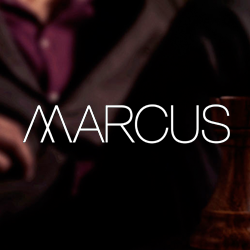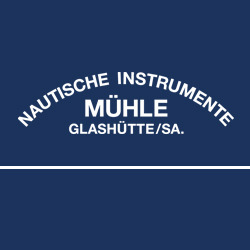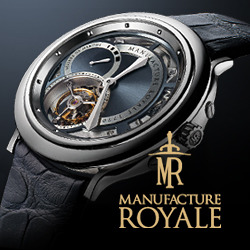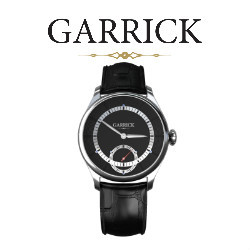Watches are inextricably linked with motoring for a simple reason: ever since the automobile first appeared, timing its speed across a fixed distance has been a test of a car’s merits. Time trials, race results, ‘how fast can she do the quarter-mile’: motoring enthusiasts have always needed a convenient way of both measuring and recording time in small segments. True, in the modern era, every race circuit has ultra-precise electronic timing devices on display, but the first dyed-in-the-wool car nuts must have jumped for joy when wristwatch chronographs appeared, so they could wear their own portable, precision timers.
A short history and couple of definitions will start you on your way toward acquiring the ideal timekeeper for your needs, whether you want to perform your own measurements to learn what you car will do, if you’re an habitué of track days who would like to time various competitors, or if you merely want to complement the massive timers at the races you attend.
There’s a distinction between mechanical and electronic timekeepers that is also the distinction between the tastes of an enthusiast and those of one who merely prefers the utilitarian: mechanical time keepers are to quartz what a manual gearbox is to an automatic. If you have any retro leanings in your blood, you’ll prefer the traditional, mechanical chronograph. Anything else is about as romantic and evocative of classic motor racing – especially of the wheels and gears that make up a car – as your mobile phone
Beginning with the terminology, the word ‘chronograph’ combines the Greek words for ‘time’ (chrono) and ‘something recorded or written down’ (graph). It should not be confused with ‘chronometer’, which is any timekeeper that has been tested to a set of standards established by Contrôle Officiel Suisse des Chronomètres (COSC) in Switzerland. However, a watch can be both, like Rolex’s legendary Daytona.
Chronographs date back to the days of pocket watches, their function being to time horse races and other events, the first being credited to Nicolas Rieussec in 1821. Over the past 190 years, watch companies such as Longines, Heuer, Leonidas, Minerva, Breitling, Zenith, Universal Geneve and many others specialised in the development of chronographs, while every major brand up to the likes of Patek Philippe, Vacheron and Audemars Piguet offers chronographs in their catalogues.
In the most basic terms, a chronograph wristwatch combines all of the capabilities of a stop-watch – which doesn’t tell time per se – with a watch that tells regular time. That’s all a chronograph is: a time-telling watch combined with a stop-watch. Marrying both a regular watch and a stop-watch in a wristwatch-sized case has been one of the great marvels of horology, especially when you compare the dimensions of wristwatch with the case size of a conventional stop-watch or pocket watch/chronograph.
In addition to cramming all of the added gears and levers into the smaller case suitable for one’s wrist, the chronograph designer also has to fit two or more extra ‘sub-dials’ onto the main dial, to show the elapsed minutes seconds and hours separately from the continuously running real-time of the watch itself. Depending on the capabilities of the latest mechanical chronographs, you might even be able to show split-seconds, with timing to a 1/10th of second with a new Zenith model, the ‘Striking 1/10th of a Second’, or even 1/100th of a second with TAG-Heuer’s Calibre 360.
Other functions become more specialised, with models aimed at yacht race timing, chronographs that show two time zones (technically speaking, ‘chronograph GMTs’), chronographs with day and date, and other features called ‘complications’. But however complex the chronograph, the absolute basics are stop-watch timing separate from the actual hours and minutes of the day, with the ability to display the minutes and seconds.
Operating a chronograph requires pushers, usually positioned above and below the winder on the right side of the case, that stop, start and re-set the large chronograph hand. Which buttons perform which action vary from model to model, but the basic procedure is simple: you press the start pusher when the event you’re timing commences, you press stop when it ends. You then note the elapsed time on the relevant small dials. Once you’ve noted the time, you press re-set, which brings the main chronograph hand back to zero, usually at the 12 o’clock position, so you can time the next event.
Among the most ‘car-related’ of chronographs are the long-running Chopard Mille Miglia models and myriad TAG-Heuers named after race tracks – a tradition that dates back to the 1960s. Eberhard has, for many years, produced a range of chronographs in honour of Tazio Nuvolari. Most sporting car brands can boast associated watches, from Aston-Martin/Jaeger-LeCoultre to Bentley/Breitling to Bugatti/Parmigiani Fleurier, the links car-watch co-brandings numbering in the hundreds, since the dawn of motoring.
Such associations number in the hundreds, ever since Dunhill added watches to its Motorities range in the 1920s, and Bugatti had Mido produce watches in the shape of the marque’s radiators, as gifts for Ettore Bugatti to bestow upon favoured drivers and clients. In the modern era, the practice has exploded: Frederique Constant has issued a model for Austin-Healey, while also becoming official timekeeper for the Peking-to-Paris Rallye. Audemars-Piguet, Bremont, Oris, Bell & Ross, Richard Mille and many others sponsor or act as official timekeepers for various motorsport events. Hublot makes a chronograph for Morgan, Blancpain a chronograph to celebrate the Super Trofeo Series for Lamborghinis.
Whether or not your mechanical chronograph of choice bears allegiance to a car, a race or a legendary driver, the basic shopping rules are simple. First, establish your price limits. Then, buy the one that feels the most comfortable for you to use, with looks that suit your taste. Preferably, you will look to a name you recognise. And then you can rest assured of one thing: you’ll never have to worry about batteries running down at a crucial moment.
CHRONOGRAPHS TO BUY IN 2010
Swatch Automatic Chronograph (£239)
Cool and classless, with a genuine Swiss mechanical chronograph movement, all for the price of a cheap quartz watch
Tissot PRS 516 Automatic Valjoux (£855 with strap, £895 with steel bracelet)
Probably the best-value chronograph on the market, with legendary Valjoux movement and – for that racer touch – a Sixties-style bracelet and a steering wheel on the back
Victorinox Infantry Vintage Chrono Mecha (£1395)
All the functionality of a modern chronograph, but with a quasi-military/quasi-vintage look. Despite the retro appeal, it’s a very modern 44mm across
TAG Heuer Carrera 1887 (£2350)
Watch snobs swear by timepieces that are powered by the companies’ own movements – not one bought in from outside suppliers. TAG Heuer’s latest Carrera is the debut platform for the brand’s new in-house calibre, and at a low price that has stunned the cognoscenti
Breitling Chronomat B01 (from £5010)
Like TAG Heuer, chronograph wizards Breitling are offering an in-house movement, the advanced B01. For the initial release, it’s only available in the classic Chronomat
Zenith Striking 10th (from £7,000)
Zenith’s El Primero was one of the first-ever automatic chronograph movements, now into its 40th year. The Striking 10th allows you to check timings to a tenth of a second
Blancpain L-Evolution “Super Trofeo” (£13,470)
Blancpain’s sponsorship of the all-Lamborghini Gallardo Super Trofeo Racing Series has resulted in this sublime, super-macho model, with start pusher highlighted in red
Audemars-Piguet Royal Oak Offshore Grand Prix (£26,500)
A-P’s iconic Royal Oak – which redefined sport watches in the ‘70s – does it again in the 21st Century with the ultra-lightweight Offshore Grand Prix, with a case of forged carbon fibre
(Motorsport, 2010)


